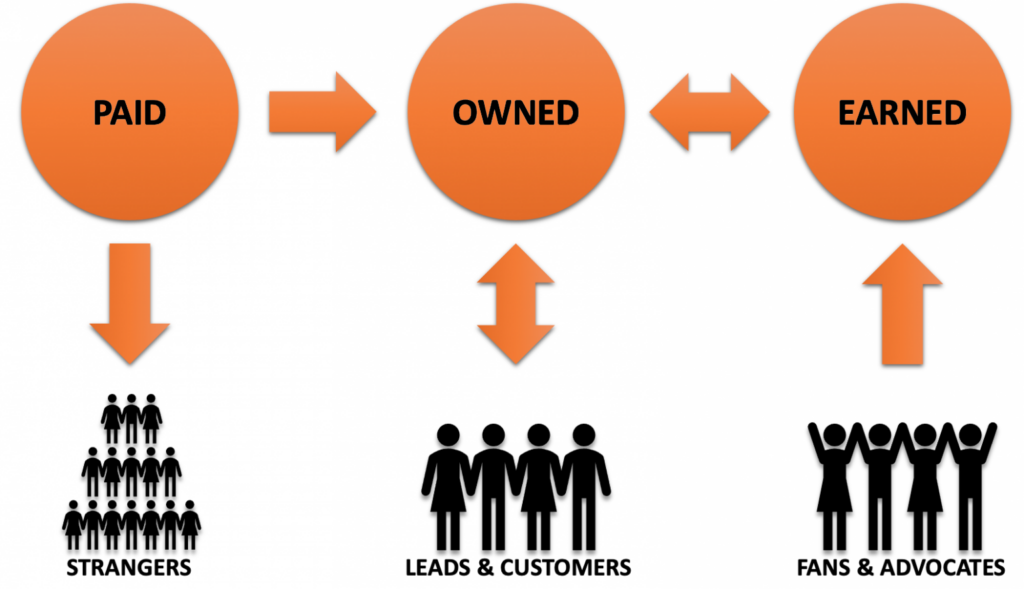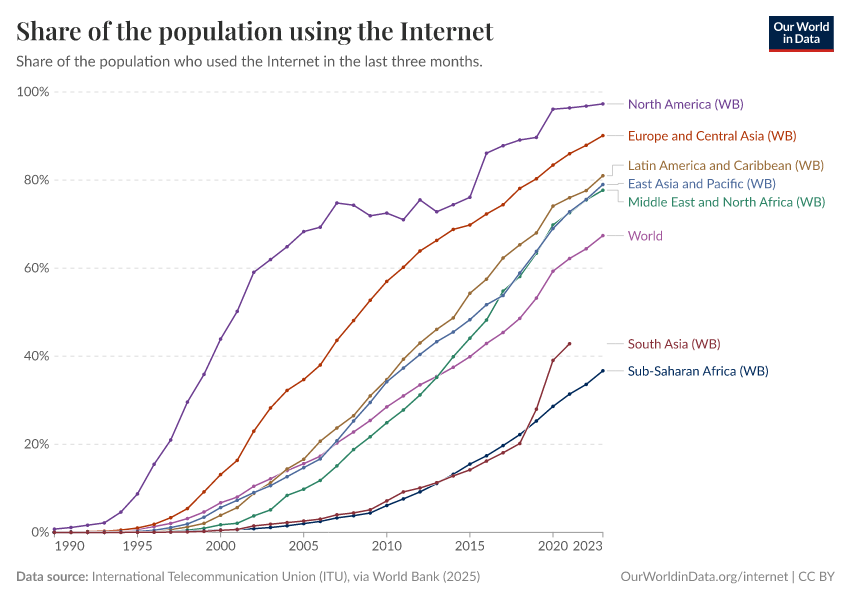Lesson 2: How Digital Marketing Has Transformed Marketing
Digital marketing turned one-way broadcasting into two-way, measurable relationships across devices, platforms, and data. This lesson grounds the ideas with current frameworks, charts, and credible sources.
What is digital and multichannel marketing?
Digital marketing is
achieving marketing objectives through applying digital media, data
and technology.[1]
Multichannel marketing coordinates online and offline
touchpoints (web, email, social, stores, call centers) so the
experience is consistent wherever customers interact.
Digital marketing is about:
- Audiences — addressable, segmented, lookalikes
- Digital devices — phones, laptops, TVs, wearables
- Digital platforms — Instagram, YouTube, LinkedIn, TikTok
- Digital media — paid, owned, earned (POEM)
- Digital data — analytics, CRM, consented zero/first‑party data
- Digital technology — CMS, CDP, marketing automation, AI

Key Performance Indicator (KPI) refers to measurable metrics that show how well your marketing is achieving the objectives at each stage (e.g., CTR, Conversion Rate, Customer Retention).
Customer lifecycle marketing (RACE)
The RACE framework organizes growth into four stages—Reach, Act, Convert, Engage—with KPIs at each stage to test, learn, and optimize.[1][3]

Reach
Grow visibility via SEO, social, PR, paid. KPIs: impressions, unique users, share of search.
Act
Drive interactions (views, tool use, downloads). KPIs: CTR, time on page, lead starts.
Convert
Sales or signups on web/app/store. KPIs: conversion rate, AOV, CAC, ROAS.
Engage
Loyalty and advocacy. KPIs: repeat rate, LTV, churn, NPS, review velocity.
Why it matters: the digital audience is massive

Access keeps expanding worldwide

Touchpoint summary for a retailer (multichannel → omnichannel)
A simple map of typical retail touchpoints across the lifecycle. Use it to plan channel roles and hand‑offs.
Pre‑purchase
- Search (SEO/PPC)
- Social & creators
- Website category pages
- Email/SMS teasers
- Display/retargeting
Purchase
- Product page (UX & copy)
- Checkout & payments
- Store POS / kiosk
- Click & collect
- Assisted chat
Post‑purchase
- Order tracking
- Onboarding/how‑to
- Care & returns portal
- Review requests
- Loyalty & referrals
Data & orchestration
- Consent & preferences
- CDP & CRM audiences
- Attribution & MMM
- Trigger journeys
- Testing & personalization
Why this matters now
Strong brands balance long‑term brand building with short‑term performance marketing. Use RACE to allocate goals and metrics, and POEM to orchestrate channels.[7][8][3]
POEM in practice
Modern brands blend media types: paid to reach, owned to convert, earned to amplify. See the POEM overview and examples.[2][10]
- Paid: search & social ads to prime demand
- Owned: product pages, app, email nurtures
- Earned: UGC, reviews, PR pickup
Activity (to complete offline or in class)
- Select a brand you know. Map one tactic for each RACE stage (Reach, Act, Convert, Engage).
- Classify the channels you would use as Paid, Owned, or Earned. Explain why each fits the stage.
- State one metric per stage you would track and the target you’d set (e.g., CTR, CVR, repeat rate).
- Identify one risk (e.g., cookie deprecation, creative fatigue) and how you would mitigate it.
You may refer to the HBS Online planning steps and the HBR article on balancing brand and performance when framing your answers.[7][8]
Questions to answer
- Using the RACE model, where would you invest first for a new retailer and why?
- Give one example each of Paid, Owned, and Earned media a retailer could deploy in the next 30 days.
- How would you measure success across channels without over‑crediting last‑click conversions?
- What’s one way to balance brand building with performance marketing in the next quarter?
References (APA 7th)
- Chaffey, D. (2025, April 10). What is digital marketing? Our visual summary of 18 key techniques. Smart Insights. https://www.smartinsights.com/digital-marketing-strategy/what-is-digital-marketing/ [Definition used in this lesson].[1]
- Grayson, R. (2023). Foundations in digital marketing. BCcampus. https://opentextbc.ca/foundationsdigitalmarketing/ [POEM diagram and explanation].[2]
- Mangles, C. (2024, January 30). Marketing campaign strategy: The RACE framework — your 5‑step plan. Smart Insights. https://www.smartinsights.com/digital-marketing-strategy/organize-campaign-plan-race-framework/ [RACE usage].[3]
- Ritchie, H., Mathieu, E., Roser, M., & Ortiz‑Ospina, E. (2023). Internet. Our World in Data. https://ourworldindata.org/internet [Topic page and CC‑BY license].[4]
- Our World in Data. (2024, December 23). Number of people using the Internet [Data visualization]. https://ourworldindata.org/grapher/number-of-internet-users [5]
- Our World in Data. (2025, January 24). Share of the population using the Internet [Data visualization]. https://ourworldindata.org/grapher/share-of-individuals-using-the-internet [6]
- Stengel, J., Lamberton, C., & Favaro, K. (2023, May). How brand building and performance marketing can work together. Harvard Business Review. https://hbr.org/2023/05/how-brand-building-and-performance-marketing-can-work-together [7]
- Harvard Business School Online. (2024, February 8). How to create a digital marketing plan: 4 steps. https://online.hbs.edu/blog/post/digital-marketing-plan [8]
- Smart Insights. (n.d.). Digital Week — How to drive digital marketing using RACE [Video]. YouTube. https://www.youtube.com/watch?v=v2kO6EQkwYw [9]
- Newman, D. (2014, December 3). The role of paid, owned and earned media in your marketing strategy. Forbes. https://www.forbes.com/sites/danielnewman/2014/12/03/the-role-of-paid-owned-and-earned-media-in-your-marketing-strategy/ [10]